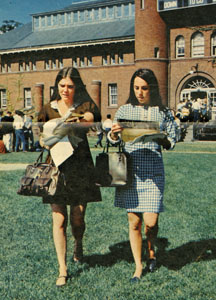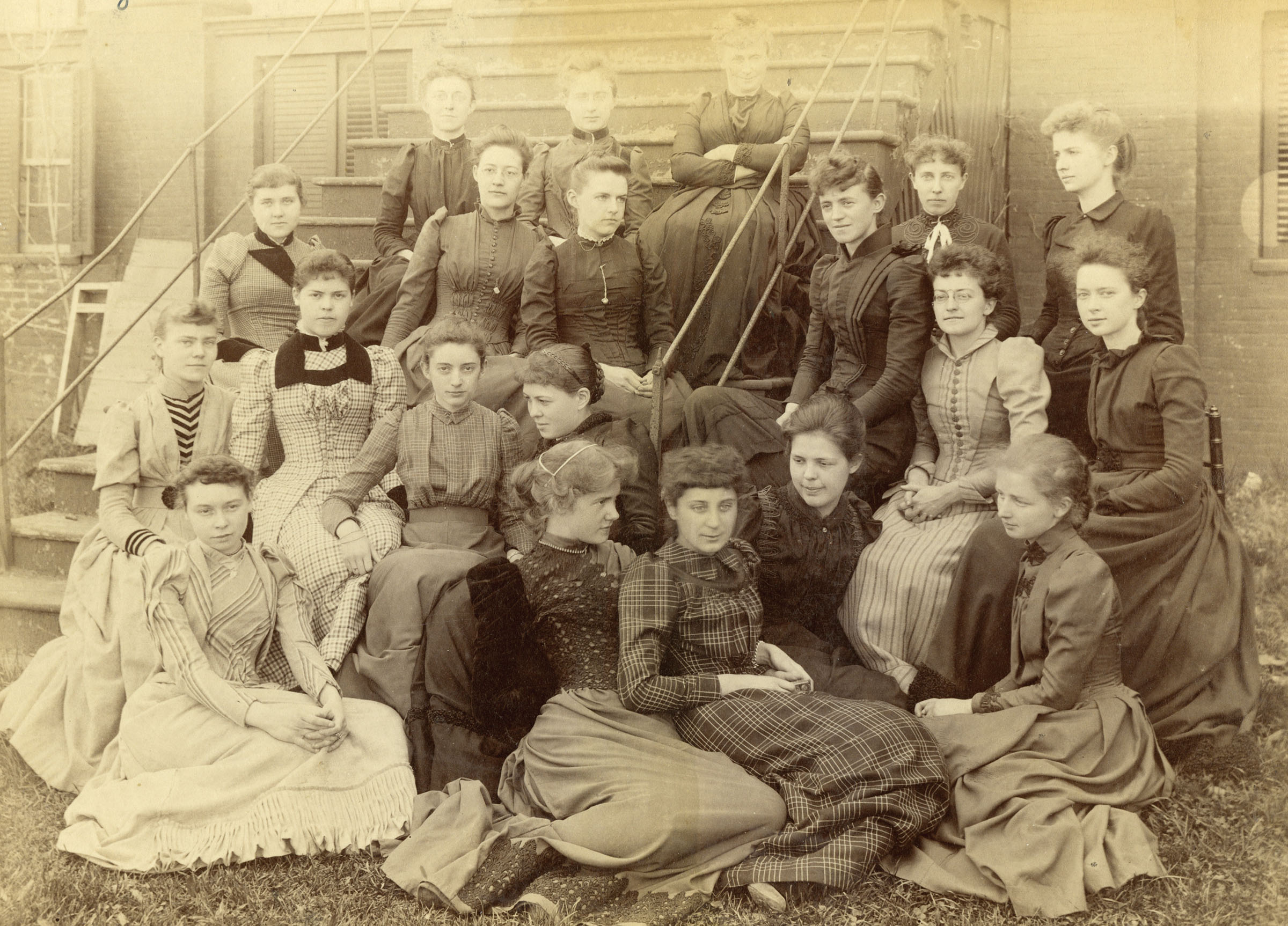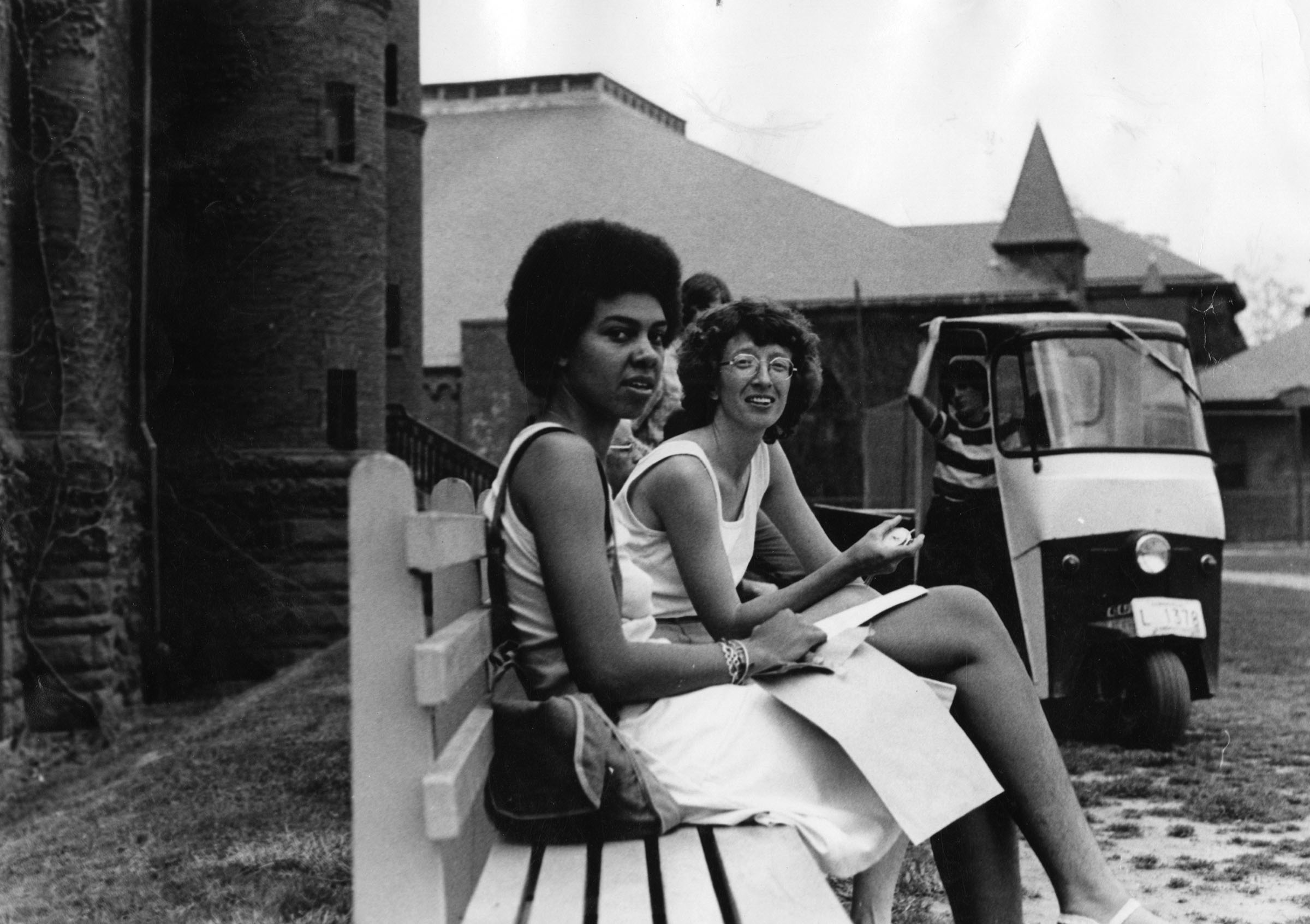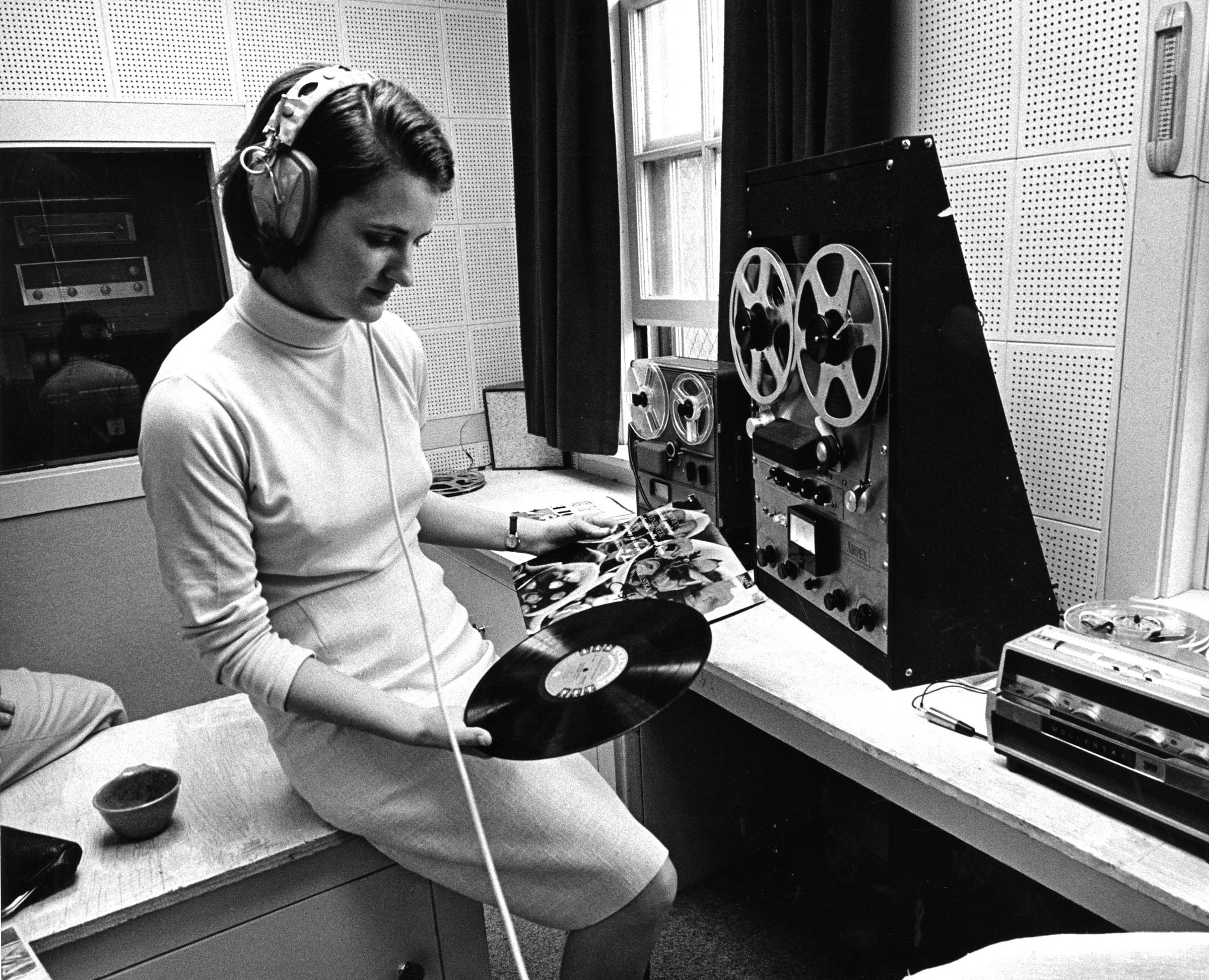WOMEN OF WESLEYAN

In an earlier time at Wesleyan, female students were referred to as “quails,” and while they held their own—and even surpassed their male classmates—academically, they were segregated from the male population in housing, dining, and student organizations. Male undergraduates said the women students “though with us are not of us,” according to Wesleyan University, 1831–1910 by David B. Potts ’60.
This early experiment with coeducation, which lasted from 1872 to 1909, stemmed from Wesleyan’s identity as a Methodist institution, in accordance with the Methodist practice of educating young men and women together. It ended under alumni protest.
Coeducation at Wesleyan in the modern era began in 1968, when women were admitted as exchange or transfer students, and in 1970, the first female students were admitted to the freshman class since 1909. Those pioneering women, some shown here, just celebrated their 40th Reunion.
The return of coeducation to Wesleyan heralded a dramatic expansion in the size of the student body, and gender parity was achieved within several years. Today, the undergraduate ratio is 52 percent women and 48 percent men.





